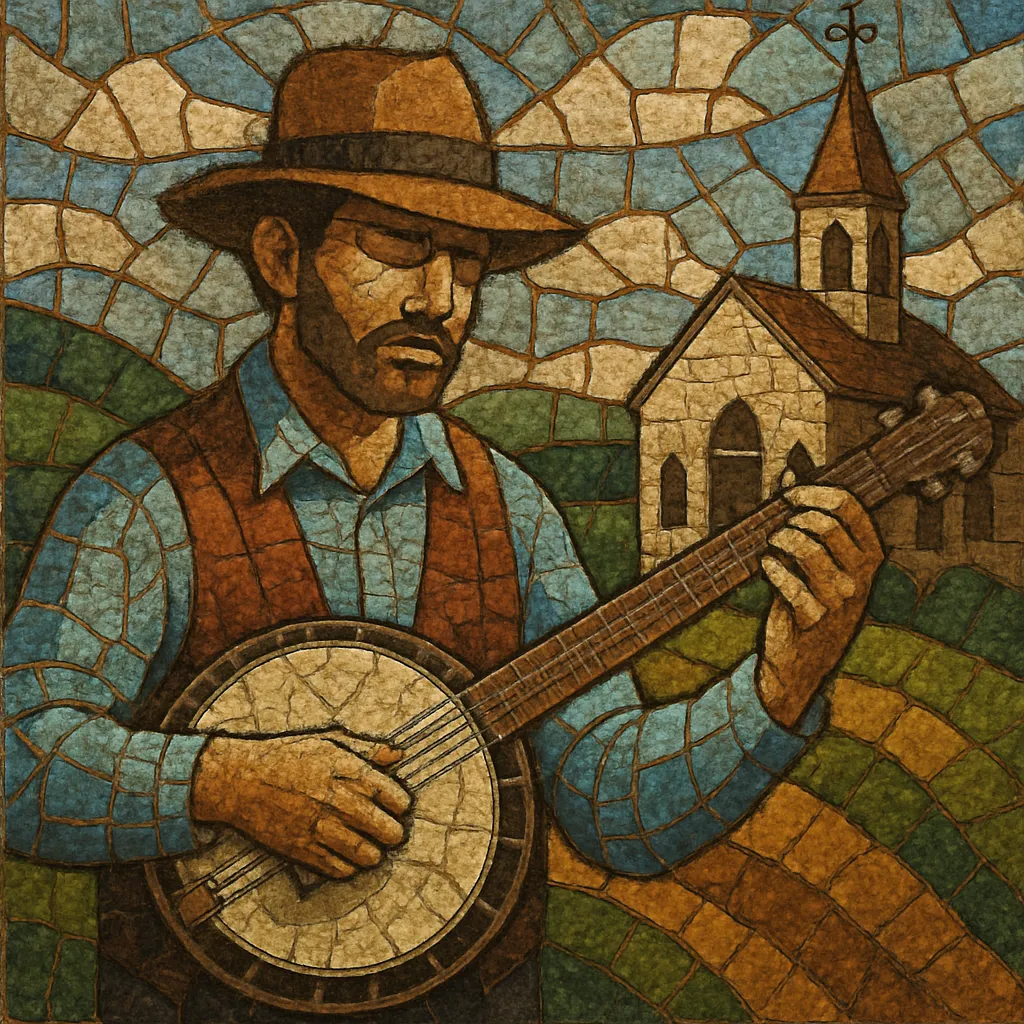
Bluegrass gospel is the sacred branch of bluegrass that marries the idiomatic, high‑energy string‑band sound with Christian devotional lyrics.
It features close, “high lonesome” harmonies; acoustic instruments such as banjo, fiddle, mandolin, guitar, upright bass (often dobro as well); and arrangements that alternate verses with instrumental breaks. Choruses often spotlight three‑ or four‑part harmony, sometimes a cappella, with lead, tenor, baritone, and bass parts in stacked voicings.
The style draws from Appalachian folk hymnody, shape‑note singing, southern gospel quartet traditions, spirituals, and old‑time and country repertoire, while retaining bluegrass’s drive, off‑beat mandolin “chop,” Scruggs‑style banjo rolls, and fiddle kick‑offs. Typical harmonic language centers on I–IV–V with plagal “Amen” cadences, occasional secondary dominants, and modulations up a whole step to heighten emotion.
Lyrical themes emphasize salvation, grace, heaven, testimony, and perseverance through hardship, delivered with earnest, unembellished sincerity.
Bluegrass gospel emerged alongside the birth of bluegrass in the 1940s United States. Bill Monroe & His Blue Grass Boys established the core sound—rapid tempos, virtuosic picking, and tight harmonies—while frequently performing sacred numbers. Early outfits such as the Stanley Brothers and Flatt & Scruggs folded long‑standing Appalachian hymn and spiritual repertories into the bluegrass idiom.
By the 1950s and 1960s, gospel became a staple of bluegrass sets and recordings. Groups regularly included a cappella quartet features and slowed, reflective waltzes alongside driving two‑beat songs. The Country Gentlemen, Osborne Brothers, and others helped canonize standards like "Angel Band" and "I Am a Pilgrim," bridging southern gospel quartet practice with string‑band aesthetics.
As bluegrass festivals and radio programming expanded, Sunday‑morning gospel sets became tradition, reinforcing the sacred repertoire’s visibility. Labels and series devoted to sacred bluegrass recordings appeared, and family ensembles (e.g., The Isaacs) carried quartet harmony into modern production contexts while preserving acoustic purity.
Contemporary artists such as Doyle Lawson & Quicksilver, Dailey & Vincent, and Ricky Skaggs & Kentucky Thunder continue the style with polished vocals, impeccable ensemble blend, and occasional contemporary Christian songwriting adapted to acoustic instruments. The genre thrives in churches, festivals, and concert halls, maintaining its devotional focus while engaging new audiences with pristine musicianship.
Use an all‑acoustic lineup: lead vocal, tenor/baritone/bass harmony singers; guitar (rhythm), mandolin (off‑beat “chop”), 5‑string banjo (three‑finger rolls), fiddle (melodic leads and kick‑offs), upright bass (two‑beat “boom‑chuck”), with optional dobro. Avoid drums; rely on percussive mandolin chop and bass pulse.
Write singable melodies with a clear, prayerful arc. Employ 3‑ or 4‑part harmony on choruses: lead in the middle, tenor above, baritone below, and optional bass. Use common gospel devices: plagal cadence (IV–I “Amen”), turnarounds with secondary dominants (V/IV→IV or V/V→V), and a mid‑song key change up a whole step to intensify the final chorus.
Favor cut‑time (2/2) two‑beat feels for faster numbers and 3/4 for reflective hymns. Typical form: intro (fiddle or banjo kick‑off), verse, chorus (stacked harmony), instrumental break (rotating soloists), verse/chorus repeats, modulation, final chorus with tag. Keep instrumental breaks melodically tied to the vocal line.
Center lyrics on salvation, redemption, heaven, personal testimony, and encouragement through trials. Use plain, direct language and biblical imagery. Alternate narrative verses with declarative, memorable choruses suitable for congregational singing.

